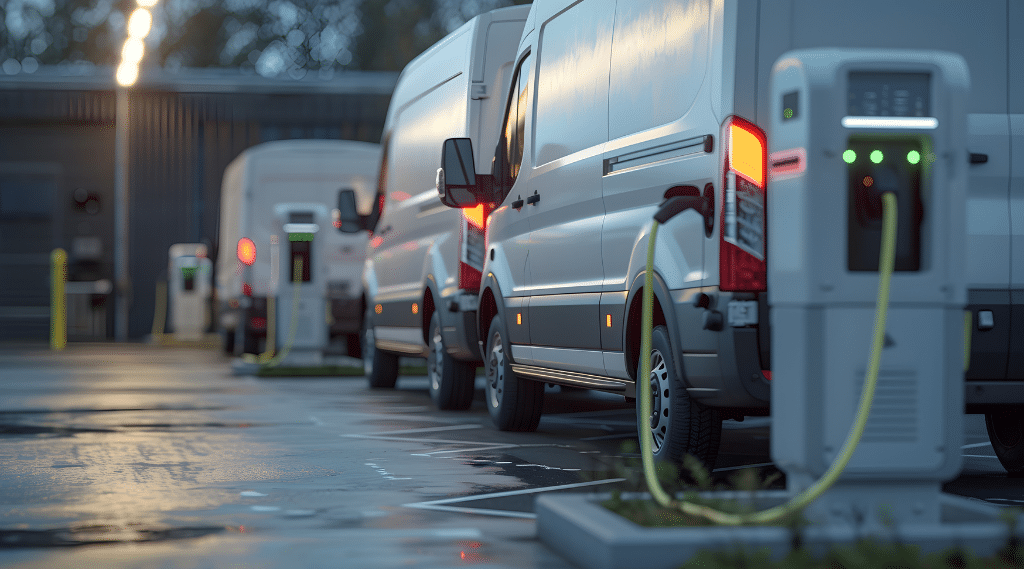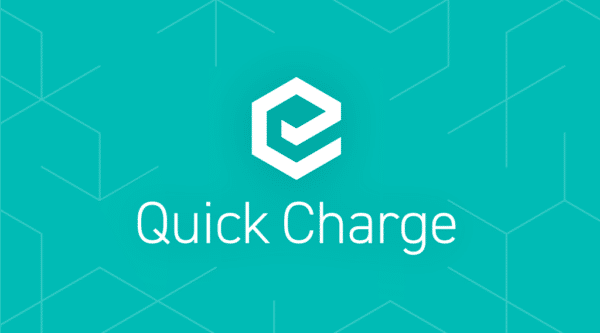One of the most critical decisions fleet managers face when electrifying their fleets is determining the optimal strategy for charging electric vehicles (EVs): depot vs on-route charging. The primary options are depot charging—where vehicles are charged at a centralized facility owned or leased by your organization—and public charging, which relies on shared infrastructure at multi-fleet hubs or on-route public stations.
Studies indicate that 83% of vehicles in classes 3–8 are well-suited for depot-based charging. However, a recent survey by Charging-as-a-Service (CaaS) provider Electrada found that approximately 30% of National Association of Fleet Administrators members plan to utilize shared public infrastructure for charging.
So, how do you decide which charging option aligns best with your EV fleet’s needs? In this article, we’ll compare depot charging and public charging across three critical areas: operational efficiency, financial implications, and security and control.
Depot vs On-Route Charging: Operational Efficiency
When it comes to operational efficiency, depot charging with a CaaS partner stands out for several reasons:
- Guaranteed Charger Availability: Exclusive access to charging infrastructure at your depot allows you to create a charging schedule tailored to your operational requirements. This ensures optimal efficiency and eliminates uncertainties related to charger availability. Plus, CaaS providers like Electrada offer a 99% uptime guarantee, handling all maintenance and updates so you can focus on your core business.
- Simplified Charging Operations: Depot-based chargers make EV fleet monitoring and management straightforward. They provide real-time data essential for improving operational efficiencies, maximizing vehicle uptime, and aiding future planning.
- Scalability: A CaaS provider can seamlessly scale your charging infrastructure alongside your company’s growth and fleet expansion, ensuring your charging capabilities evolve with your needs.
In contrast, on-route charging introduces complexities due to the lack of control over shared infrastructure availability. This uncertainty complicates scheduling and logistics, potentially leading to increased downtime. Let’s dive deeper:
- Charger Availability Issues: Public chargers may not be available when needed, exacerbated by a gap between supply and demand. For instance, California has just one public charging port for every 29 EVs.

- Reliability Concerns: Public chargers often suffer from reliability issues. A University of California, Berkeley study found that nearly a quarter of public chargers surveyed were non-functional due to various technical problems.
- Increased Downtime: On-route charging requires vehicles to charge during business hours, reducing operational time. Implementing smart route planning and depot charging strategies can mitigate these issues.
Financial Implications of Depot vs On-Route Charging
Depot charging with a CaaS partner offers significant financial benefits:
- Elimination of Upfront Costs: While depot charging can involve substantial initial investments if done independently, CaaS providers like Electrada cover 100% of the capital costs for installation, removing financial barriers to electrification.
- Cost-Effective Energy Management: Predictable pricing models from CaaS providers protect fleets from volatile energy costs. Depot charging optimizes energy use and mitigates peak demand charges. Charging during off-peak times can save between 30% and 50% in electricity costs compared to peak-time charging.
On the flip side, on-route charging can be more expensive due to pay-per-use models and higher costs during peak demand periods. This cost disparity underscores why evaluating depot vs on-route charging is essential for fleet managers seeking to maximize cost savings.
Security and Control
Depot charging also excels in terms of security and control:
- Enhanced Security: Charging within your depot premises offers greater security compared to public sites. This safeguards both your vehicles and sensitive data from potential risks associated with public networks.
Conclusion: Depot Charging with CaaS is the Optimal Choice
Depot charging with Electrada’s 360 CaaS solution simplifies operations, optimizes efficiency, and reduces costs for most EV fleets. By providing a fully capitalized, performance-guaranteed, and fleet-tailored electric fuel solution, Electrada enables you to focus on your core business without the complexities of charging infrastructure management.
Get in touch to learn more about how Electrada’s 360 CaaS can provide a seamless, cost-effective, and reliable charging solution tailored to your fleet’s unique needs.



